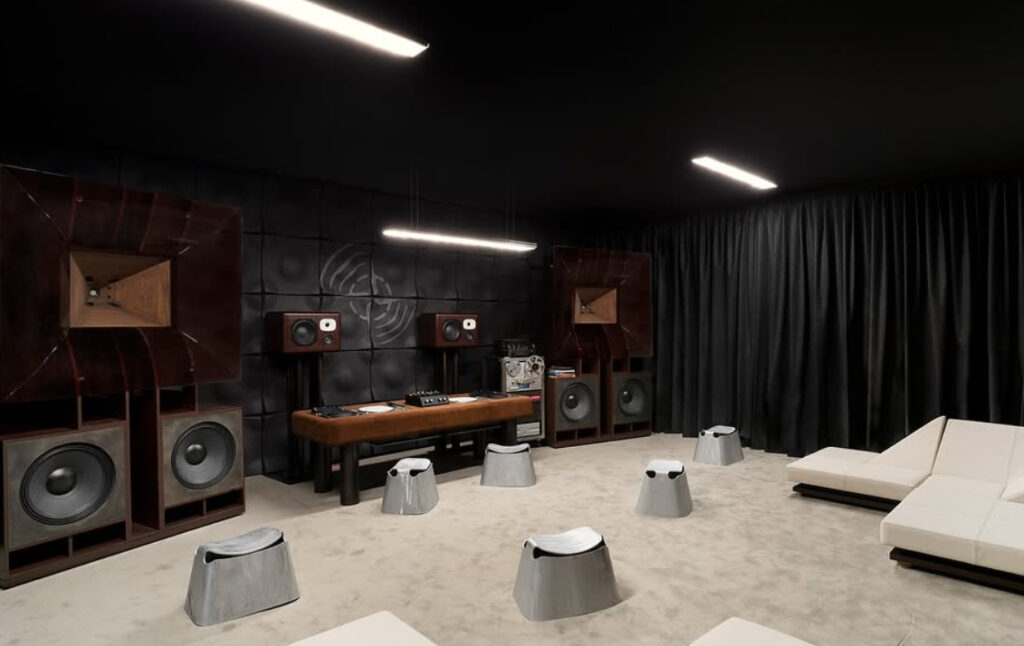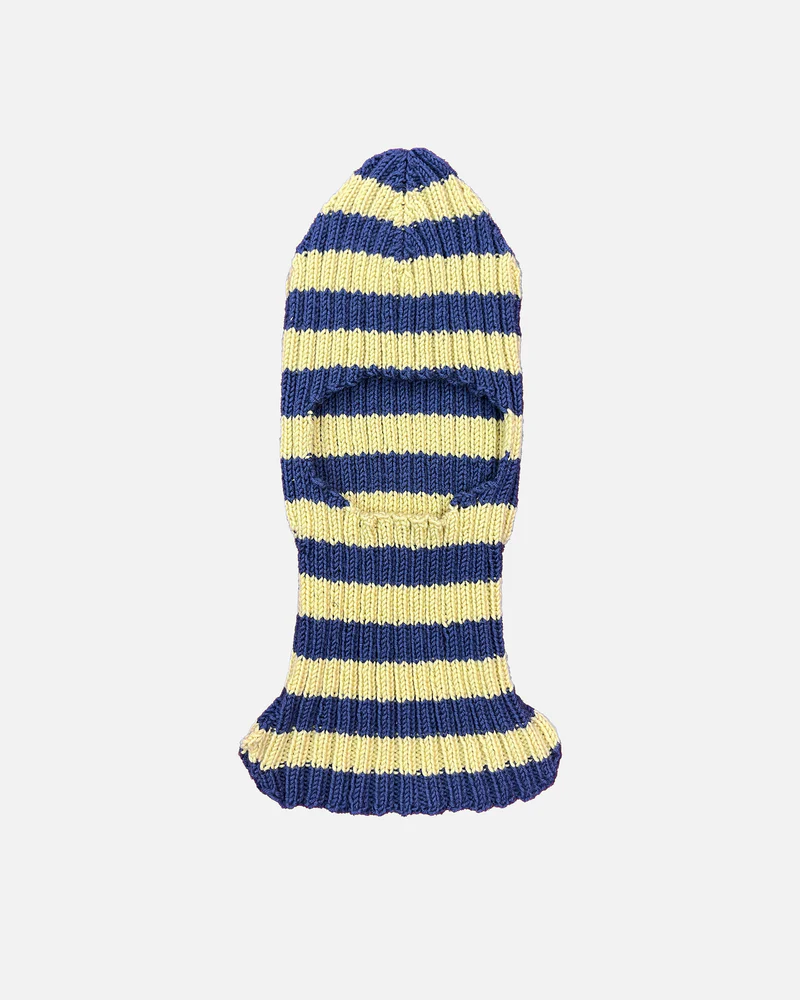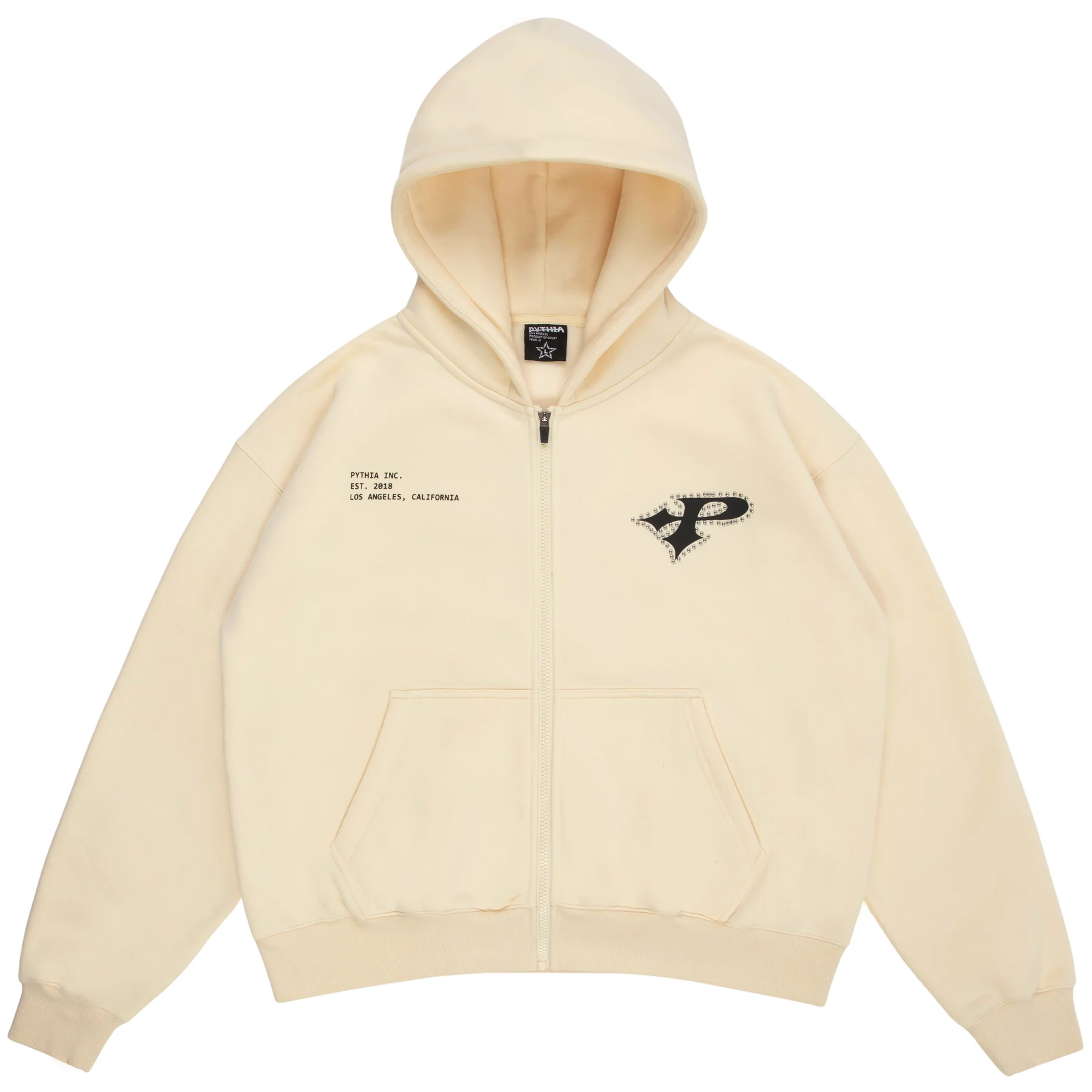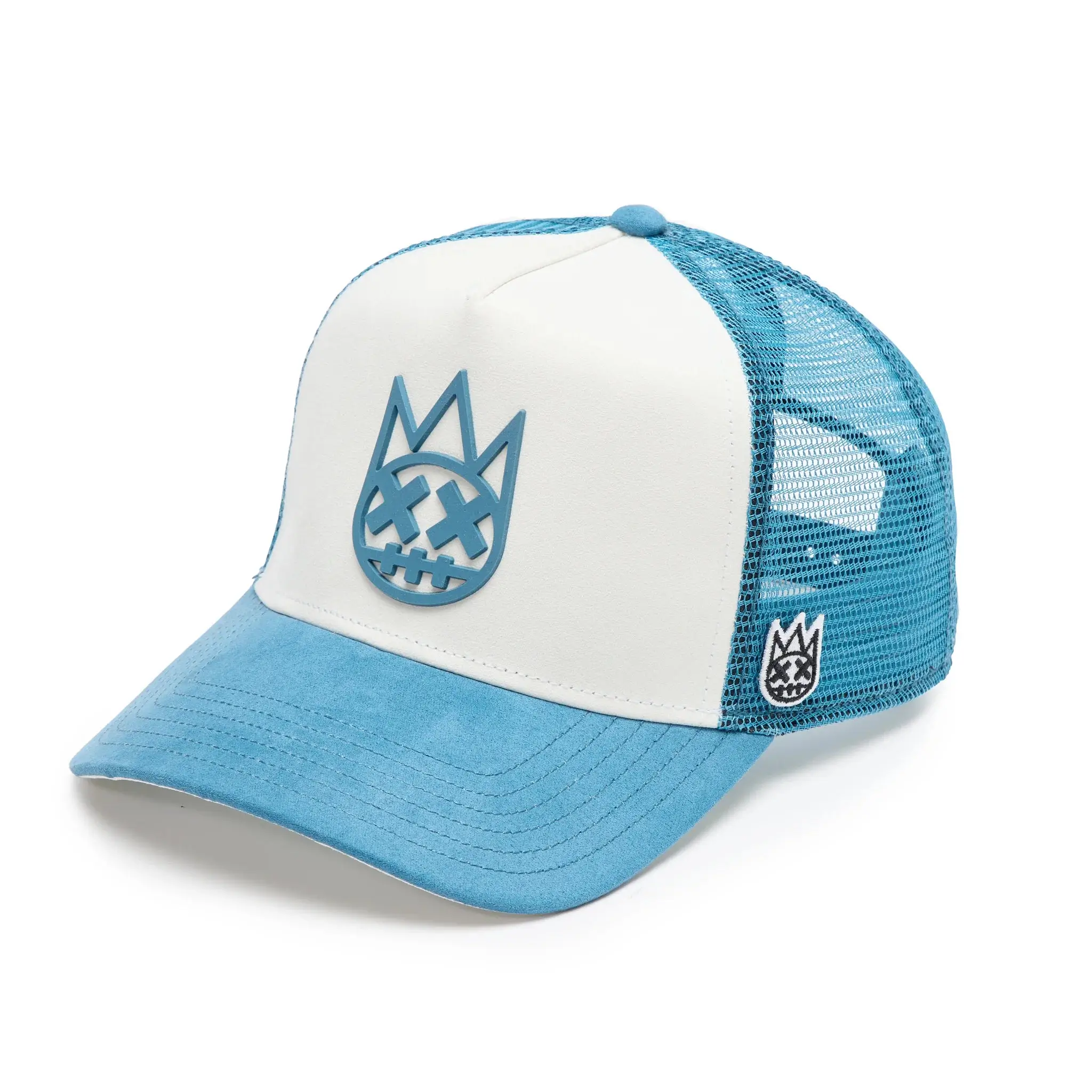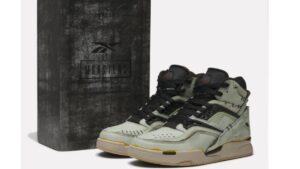In a cultural moment when brand convergences often feel superficial or purely transactional, Stone Island’s recent partnership with Friendly Pressure doesn’t just push boundaries—it redefines the perimeter. Known globally for its obsession with textile engineering and garment innovation, the Italian label has extended its material curiosity into the auditory realm. The result? A series of immersive listening events that transform the listening experience into something palpably tactile, materially experimental, and sonically elevated.
This is not a story about putting speakers in a showroom. This is a story about constructing a listening architecture—about translating fabric codes into audio frequencies, about sculpting sound the way Stone Island sculpts polymers, nylons, and heat-reactive surfaces. In pairing with Friendly Pressure, a London-based audio firm known for crafting custom speaker systems for sonic purists, Stone Island brings its design DNA into a new medium: vibration.
The Fabric of Sound: A New Language for Fashion Storytelling
From its inception in 1982 by Massimo Osti, Stone Island has built a reputation on innovation at the molecular level. Garments have been dyed, treated, bonded, and laminated with military precision. The brand’s collections aren’t just about style—they’re about sensation. What does heat feel like on the skin? What happens when reflective threads interact with urban light? These questions—historically answered through outerwear—are now being reframed in audio.
For Stone Island, fabric is already a language. It communicates mood, intent, and identity. Now, through a new vocabulary of bass, clarity, warmth, and reverb, the brand explores how soundscapes can function as textile analogues. If you’ve ever worn a Stone Island Shadow Project jacket, you know the feeling: secure, dense, dimensional. The idea behind this union is that a sound can evoke that same sensation—if calibrated properly.
Who Is Friendly Pressure?
To achieve this vision, Stone Island turned to Friendly Pressure, a studio built on the philosophy that sound should not only be heard—it should be felt. Founded in London, Friendly Pressure has built a quiet but cult reputation among audiophiles, having outfitted experimental listening venues like MOKO, a bar co-created by Bradley Zero and Nathanael Williams, and designing systems for institutions like The British Library.
The studio doesn’t just “install speakers.” It designs acoustic environments. Their work often draws from vintage hi-fi traditions, with a contemporary twist—crafting speaker cabinets by hand, using hardwoods, custom drivers, and unique cabinet geometries tailored for specific reverberation profiles.
They’re not a mass-market manufacturer. They’re not interested in volume or scale. They build systems the way Stone Island builds clothing: through methodical craftsmanship, obsessive R&D, and experimental iteration. It’s no wonder the two found each other.
The Listening Event Series: Immersion Without Interruption
At the core of this collaboration is a series of private listening events held in experimental retail spaces and studios across key global cities—London, Milan, Tokyo, New York. But these aren’t just marketing showcases. They’re sensorial studies. Each event space has been tuned not only acoustically but aesthetically to reflect Stone Island’s seasonal palette and technological direction.
Guests don Stone Island apparel and experience a custom-curated sonic journey—one where every track has been selected for its materiality. Sound designer-curators worked alongside product engineers to match frequencies to fabrics: tracks with dense sub-bass evoking the structural integrity of O-VENTILE® coats; shimmering highs paralleling the gleam of reflective Nylon Metal; and compressed analog warmth reminiscent of Stone Island’s archive cotton canvas treatments.
The idea is radical: to explore clothing as sound and sound as extension of the body in space.
Acoustic Tailoring: The Technical Anatomy of the Speakers
Let’s talk gear. Each Friendly Pressure system was built bespoke for these events. Custom horn-loaded tweeters were paired with time-aligned midrange drivers and hand-tuned ported bass cabinets. The materials used in construction—walnut, ash, and birch ply—were chosen not only for acoustic resonance but also for aesthetic synergy with Stone Island’s design codes.
In some installations, the cabinets were finished in Stone Island’s own dyeing techniques, including garment-dyed matte lacquers and heat-sensitive color shifts—turning the speakers into living pieces of the brand’s fabric lab.
Crossovers were tuned by ear, not algorithm. Power was delivered via Class A amplification for warmth and dynamics. Analog signal paths were preferred to digital for their tactile musicality—echoing Stone Island’s preference for materials that age, morph, and react over time.
A New Type of Consumer Engagement
In an age where customer experience is often equated with QR codes and virtual “try-ons,” Stone Island’s listening events opt for slowness and depth. Attendees aren’t bombarded with product placement. Instead, they’re invited into a mindset—one where clothing is understood not merely through visual style, but through sensation, context, and rhythm.
The speaker systems become narrative tools. Each track tells a story not only in lyrics or tone, but in how it maps onto the experience of wearing Stone Island. A thumping techno track might emulate the pulse of walking through an urban downpour in a 3L GORE-TEX shell. A jazz interlude, brushed and spatial, mirrors the quiet luxury of a brushed cotton overshirt. Even ambient textures—wind, rainfall, synthetic echoes—evoke the specific environments these garments are designed to survive. This isn’t fashion as aesthetics. It’s fashion as mood architecture.
Stone Island’s approach in these events signals a deeper shift happening across the luxury landscape—from object to atmosphere. The garment is no longer just a product; it becomes part of an ecosystem, where how you hear, feel, and move is just as important as how you look. Friendly Pressure’s hand-built speaker systems, with their minimal design and maximal fidelity, are thus not “add-ons” to the experience—they’re essential infrastructure.
Resisting the Algorithm: Analog Values in a Digital World
In many ways, this project is a form of rebellion. In a world awash with Bluetooth speakers, algorithmic playlists, and sonic sameness, Stone Island and Friendly Pressure make a case for the slow, the analog, the deliberate. Every audio system is hand-wired. Every event is location-specific. Tracks are chosen not by AI recommendation engines but by human curators who understand nuance, texture, and time.
This runs parallel to Stone Island’s refusal to follow fast fashion cycles. Just as each jacket can involve dozens of steps—dyeing, laminating, laser-cutting, and heat-sealing—each speaker system involves hours of woodcraft, soldering, acoustic testing, and iteration. There is no shortcut. What’s offered instead is integrity.
Even the visual presentation of the systems echoes this ethos. In Milan, the speaker cabinets were stacked beside folded garments dyed in complementary hues—a kind of material-to-audio gradient. In London, the sound system was set beneath a translucent nylon canopy, which inflated and deflated gently with ambient airflow, simulating the way fabric breathes with the body. Sound was no longer in the room—it was of the room.
Subculture Crossover: From Dance Floors to Techwear Labs
It’s important to recognize the cultural lineage underpinning this collaboration. Stone Island has long been a staple of subcultures—from UK football terrace style to Milanese Paninaro, from underground techno ravers to modern techwear heads. These scenes aren’t just about how people dress; they’re about how they move, how they congregate, and how they listen.
Similarly, Friendly Pressure grew out of London’s audiophile scene—rooted in dub reggae sound systems, jazz record basements, and experimental listening bars. These aren’t just places to hear music. They are places to feel it—to commune through vibration.
What unites Stone Island and Friendly Pressure is a deep, even obsessive, focus on form meeting function meeting emotion. For Stone Island, it’s about a jacket that performs as a weatherproof exoskeleton. For Friendly Pressure, it’s about a speaker that replicates a live trumpet’s air pressure with such accuracy that it causes goosebumps. Together, they bring this intensity to a shared multisensory domain.
Fashion’s New Medium: Sonic Branding Reimagined
Whereas many brands treat sound design as an afterthought—a backing track for runway or a marketing jingle—Stone Island is building a new framework. In these installations, sound is not a layer. It is the core material. Just as a designer might pick between twill and canvas, Stone Island and Friendly Pressure treat sonic frequencies like textiles—each one with its own density, elasticity, tone, and mood.
This opens up new directions in sonic branding. Imagine future retail environments not where a store simply plays music, but where each product is associated with a sonic fingerprint. Or imagine a garment’s internal NFC tag activating a spatialized soundtrack that reflects the fabric’s origins, or the climate it was built to endure. The possibilities are not only immersive—they are deeply narrative.
No comments yet.

